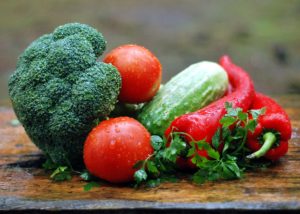The time old question: how do I know if I am eating a fruit or a vegetable? Does it have to do with sugar levels? Is there a quick trick for identifying the answer?
There are without a doubt short and long answers to this question. For the purpose of this article, we’re going to break it down with quick information and facts.
 What is a Fruit?
What is a Fruit?
A fruit is a mature seed-bearing ovary portion of a plant. It is a term for the edible plant part.
Fun fact: a fruit can be a vegetable, but a vegetable cannot be a fruit.
Fruits are generally broken down into these categories:
- Fleshy simple fruit: grapes, tomatoes, grapefruit,
- Dry accessory fruits: achene
- Dry dehiscent simple fruit: follicle, legume, silique, capsule
- Dry indehiscent simply fruit: sunflower, corn, wheat, rice, nuts, acorns
- Accessory fruits: apples, strawberries, rose hip
- Aggregate fruits: raspberries, blackberry, boysenberry
- Multiple fruits: mulberry, pineapple, platanus
 What is a Vegetable?
What is a Vegetable?
A vegetable is the edible parts of plants that are not considered to be a culinary fruit, nut, herb, spice, or grain. Unlike fruits, the term vegetable is not considered scientific, but rather came to be through culinary and cultural tradition.
Vegetables are generally broken down into these categories:
- Buds: capers
- Bulbs: onions and garlic
- Flower buds: cauliflower and broccoli
- Fruits: pumpkins, squash
- Leaf/Shoots: collards, ramps
- Roots and tubers: carrots and potatoes
- Seeds: corn
- Sprouts: bean sprouts
So is a tomato a fruit or a veggie?
We all know the debate! Is a tomato really a fruit, or really a vegetable? Well, scientifically speaking, it’s as fruity as fruit can get. But, for culinary purposes, it is used as a vegetable due to its savory over sweet taste. So, it’s up to you how you want to stand with tomatoes the next time the debate pops up. Play devil’s advocate, or accept that tomatoes are indeed, scientifically fruit.
Recent Posts
- Selective Weed Control: What Kills Weeds But Not Plants in Your Vegetable Garden
- Sustainable Gardening: How to Create a Compost System That Works
- Heirloom Cherry Tomatoes: Cultivation Secrets for the Juiciest Tomatoes
- Fighting Frost: Practical Tips for Using Frost Blankets Effectively
- Finding the Best Local Tomato Plants







